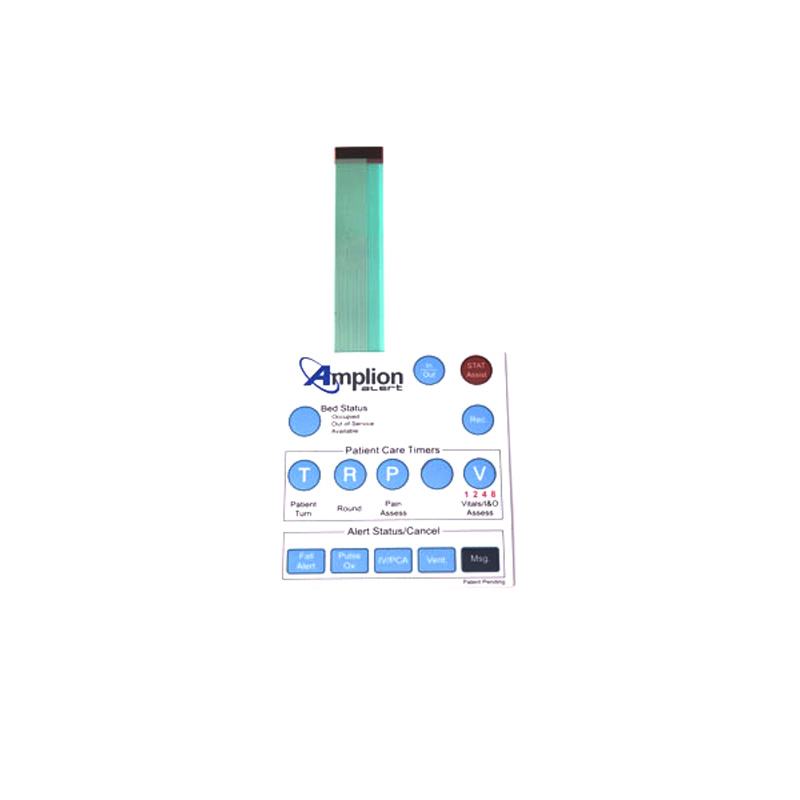

Membrane Switch panels have evolved over the decades since their inception and continue to be used in a wide range of industries and devices. In order to adapt to different situations and better serve different user groups, different membrane Switch structures and manufacturing processes have been differentiated. As a result, Membrane Switches began to differentiate into different types.
KD will sort out the most important membrane switch types and explain the advantages and disadvantages of each.
1. Metal Dome Membrane Switch
This type of membrane switch is the one we are most familiar with. It uses a metal dome as a conducting medium.
Advantages:
Good tactile sensation;
Clear audio feedback;
Operating temperature range :-20℃~80℃.
Disadvantages: If the equipment surface or liner is not smooth, it may cause short circuit or the key does not rebound.
Recommendation :KD recommends that the metal dome membrane switch be fixed on a flat surface for use.
2. Molded film switch
Through the "press mold", the silver paste plate of the upper loop Button is pressed into a certain spherical crown with a mold to produce a certain elasticity.
Advantages:
Long service life, button times up to 500,000 times;
Good tactile sensation;
Key strength can be customized upon request.
Disadvantages:
High cost of bonding mode.
High temperatures could lead to weaker key rallies.
3. Flat Key Membrane Switch
As the name implies, flat key membrane switches have a flat surface and keys are not embossed. Conductive inks are printed directly on thin film substrates without secondary processing.
Advantages:
Long service life, button times up to 1 million times;
The circuit conduction point area is large to ensure the key conduction rate;
Disadvantages: No tactile feedback, easy to cause repeated error operation.
Suggestion: Increase the spacing between keys at design time.
4.Capacitive membrane switch
Capacitive film switches use conductive materials to conduct electricity.
Pros: It can sense an operator's command at a distance, like a capacitive touchscreen;
Sensing distance can be customized upon request.
Disadvantages:
Low qualified rate of finished products;
Sensitivity to ambient electromagnetic interference;
High design complexity;
The synergy between electronic components and chips cannot be ignored.
5. EL cold light film switch
The cold light membrane switch is obtained by embedding EL cold light source in the traditional membrane switch.
Advantages:
Compared with LED membrane switch, the thickness of cold light membrane switch is greatly reduced;
Cold light film switch can be in working state for a long time to avoid heating problems;
Lighting area and color can be customized.
Disadvantages: Cold light source needs power supply.
6. PCB membrane switch
PCB membrane switch uses PCB instead of traditional silver paste circuit.
Advantages:
High precision PCB circuit;
More stable when welding LED;
Reduce resistance;
The thicker PCB circuit layer can be used directly as the backplate.
Cons :PCB is hard and can't be bent.
7. FPC membrane switch
Similar to PCB membrane switch, replace silver paste circuit with FPC to get FPC membrane switch.
Advantages:
High precision PCB circuit;
More stable when welding LED;
Reduce resistance;
Bendable like a traditional membrane switch.
Cons: Higher production costs.
These are the most popular membrane switch on the market today, each with different advantages and disadvantages.
We are a Membrane Switches manufacturer engaged in Graphic Overlay,Membrane Panels,Soft Circuits,Silicone Rubber Keyboard ,LED,LGF Silicone Rubber Keypad.All kinds of customization,welcome to come to consult

